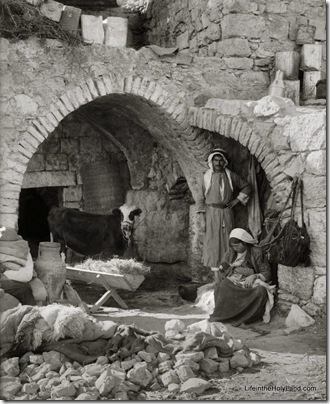“The shepherd goes before, to see that the way is practicable and safe. He is armed in order to defend his charge, and in that he is very courageous. Many adventures with wild beasts occur not unlike that recounted by David; and though there are no lion here, wolves, leopards, and panthers still prowl about these wild wadys. They not infrequently attack the flock in the very presence of the shepherd. I have listened with interest to their descriptions of desperate fights with those savage beasts. And when the thief and the robber come, and come they do, the faithful shepherd has often to defend his flock at the hazard of his life” –William M. Thomson, The Land and the Book (1885): 3:594.
The photo and quotation are taken from one of two collections of photos related to Psalm 23 on the Traditional Life and Customs volume of The American Colony and Eric Matson Collection (Library of Congress, LC-matpc-00962).





